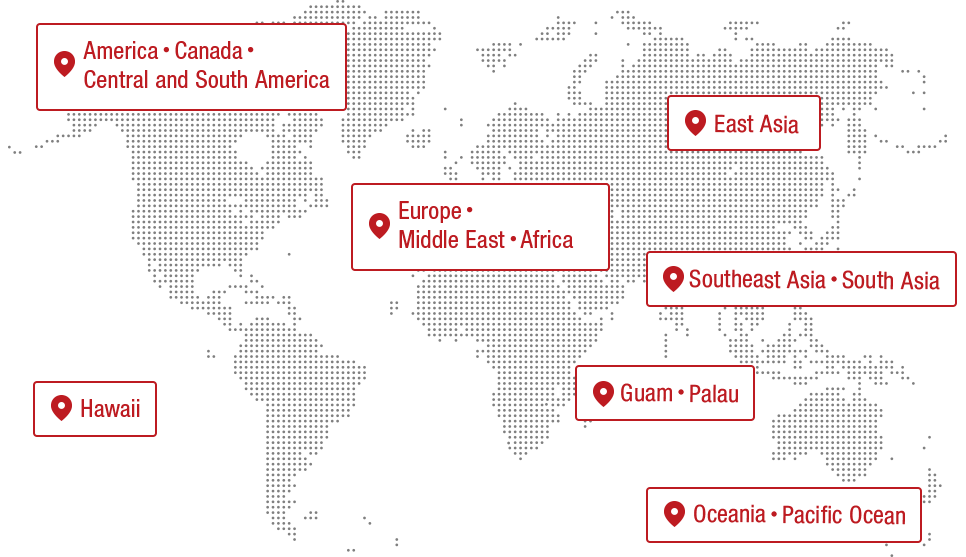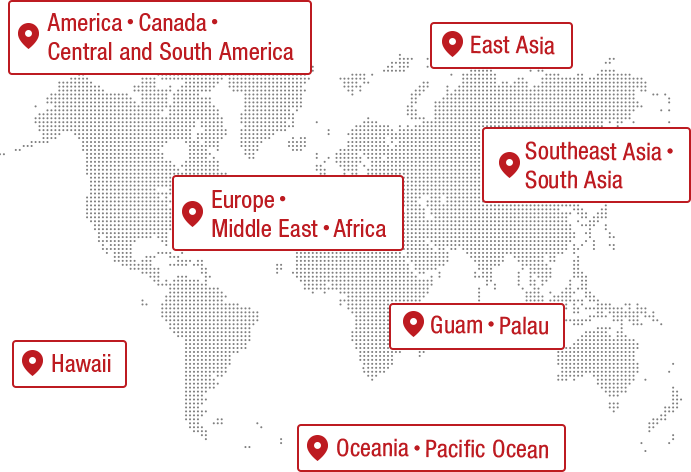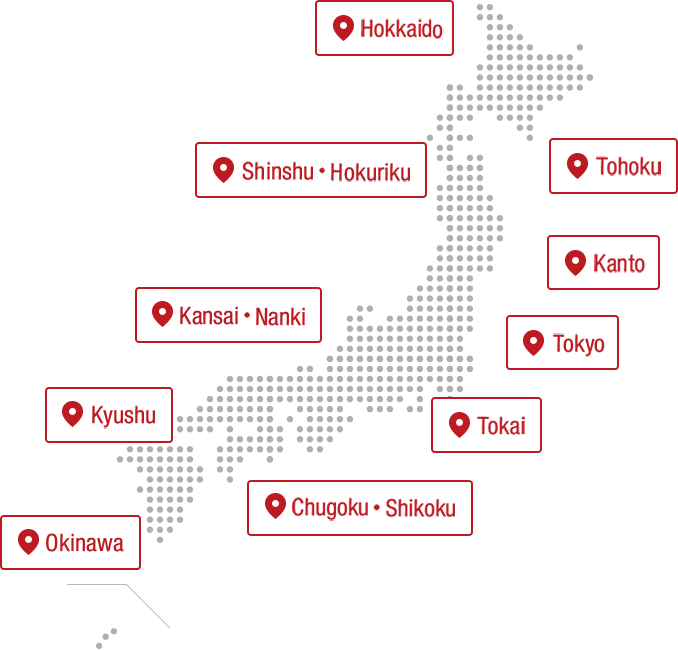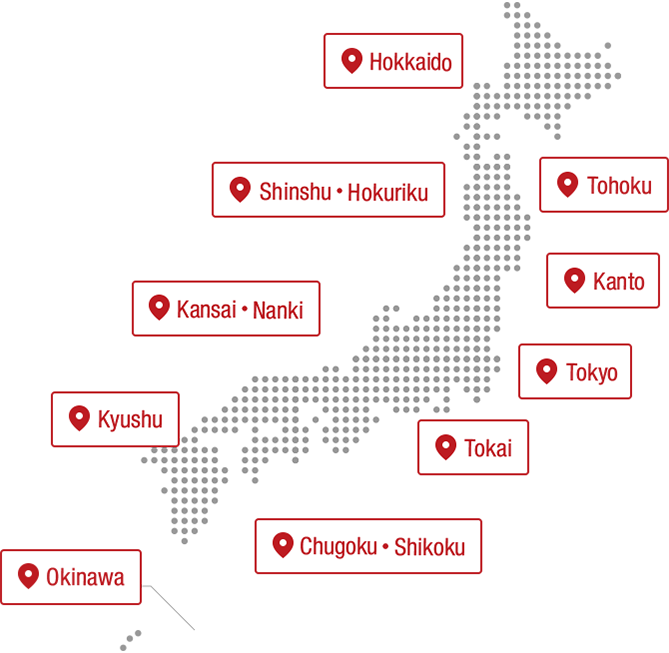This article introduces a trip to the Chikushi area, adjacent to the south of Fukuoka City, also known as the "inner parlor of Hakata." This area is known for its cheap and delicious gourmet food and bustling downtown streets, so why not try something a little more luxurious and different from your usual travels? We will introduce a two-day, one-night trip to experience the charms of Fukuoka, which has developed as the gateway to Kyushu since ancient times, including refined gourmet food and elegant traditional crafts.
INDEX
- Lunch at Kikuzushi, a Michelin one-star sushi restaurant in a residential area that has garnered attention from both within Japan and overseas
- Searching for souvenirs of Hakata-ori textiles that date back 800 years
- Take a leisurely tour of historical sites with a private taxi tour plan
- Visit Dazaifu Tenmangu Shrine, which enshrines Sugawara no Michizane, the god of learning, and Kamado Shrine, known as the holy land of the popular anime.
- Savor the last Fukuoka delicacies of your trip at Namiman, a handmade soba restaurant renovated from an old house on the approach to the shrine
Lunch at Kikuzushi, a Michelin one-star sushi restaurant in a residential area that has garnered attention from both within Japan and overseas
On the first day, when you arrive at Fukuoka Airport, head straight for lunch. The first Fukuoka gourmet you will taste on this trip is luxurious sushi, which allows you to enjoy the taste of fresh Kyushu fish. We will head to the shop of a young craftsman who is attracting attention both from within Japan and overseas, in Kasuga City, adjacent to the south of Fukuoka City.
Kikuzushi is located in a peaceful residential area where you might think you've taken a wrong turn. The second-generation owner, Yusuke Seguchi, trained in Hakata for about 10 years and then served as sous chef and sushi instructor at a five-star hotel in the Principality of Monaco. At the wedding of Prince Albert and Princess Charlene in 2011, he served sushi while Joel Robuchon and Alain Ducasse both hosted the dinner.

After returning to Japan, he took over from his predecessor and is now active as the second generation owner in his hometown of Kasuga City. Determined to keep the restaurant afloat, he renovated the restaurant and changed course to serving Edomae sushi only, offering a selection of omakase sushi. Seasonal fish is delicately prepared, and rice that has been left to sit for a year is turned into sushi rice right in front of you. Many customers are fascinated not only by the taste, but also by the way the chef makes the most delicious sushi of the day, and make their next reservation right there before they leave.

Tiger prawn

Clams
Lunch is served from 12:00, and the chef's choice course is 8,800 yen (2 appetizers, 12 sushi, red miso soup, hand rolls, and egg). Reservations are filled up two months in advance, but there are days when you can just drop in. Please call first to inquire.

Kikuzushi
| address | : | 3-51-3 Kasuga Park, Kasuga City, Fukuoka Prefecture |
|---|---|---|
| phone | : | 092-575-0718 |
| Opening times | : | 12:00~, 18:00~, 20:30~ (reservations required) |
| Closed Day | : | Monday |
| web | : | http://kikuzushi.org |
Searching for souvenirs of Hakata-ori textiles that date back 800 years

Once you've filled your stomach, head to a gallery of the traditional craft of Hakata-ori. The gallery you'll visit is the Hakata-ori Kenjokan, a gallery of Nishimura Textiles that was founded in the Edo period. The headquarters and factory are both located on the same premises, and all processes from designing to weaving are carried out here. You can tour the factory* and purchase products, so why not pick up a special item that you can only get here as a souvenir for yourself?
*As of December 2020, factory tours are generally suspended as a measure against the spread of COVID-19. Responses will vary depending on the situation, so please contact us directly if you are interested.

Hakata-ori is said to have originated from Tang weaving that was brought back by Mitsuda Yazaemon, an attendant of Shoichi Kokushi who traveled from Hakata to Song (then China) during the Kamakura period.
The stiff fabric of Hakata-ori began to be used for obi belts during the Sengoku period, and Kuroda Nagamasa is said to have used them as tributes to the shogunate. The unique patterns of Hakata-ori, which depict Buddhist altar implements such as dokko or tokko and flower plates, are called kenjo patterns. Hakata-ori obi belts are strong and easy to tie tightly, and in the Edo period, it was said that "Hakata is synonymous with men's obi belts."
The gallery displays beautiful woven fabrics, silk threads, obi (sashes depending on the period), the history of the Nishimura family, and also beautiful collaborative works with other industries, such as a cosmetics company.

Factory on the same premises
Hakata-ori obi are popular among rakugo performers and the entertainment industry, and they often come here between performances in Hakata. Recommended souvenirs include the cute, round-shaped purse with a Kenjo pattern and the luxuriously made silk mask.
Hakata-ori Date purse 2860 yen
Nishimura Textile Hakata-ori Presentation Museum
| address | : | 7-3-5 Murasaki, Chikushino City, Fukuoka Prefecture |
|---|---|---|
| phone | : | 092-922-7128 |
| Opening times | : | 10:00-17:00 (reservations required) |
| Closed Day | : | Sundays, national holidays, the second and fourth Saturdays |
| web | : | https://nishimura-orimono.jp/ |
Take a leisurely tour of historical sites with a private taxi tour plan
On the second day, we'll take a slightly more luxurious tour of historical sites that are difficult to reach by train or bus in a chartered taxi. The famous site in the Chikushi area is Dazaifu Tenmangu Shrine. Based on the Fukuoka Showa Taxi course that visits the Mizuki Castle Ruins, the Dazaifu Government Office Ruins, Kanzeonji Temple, and Dazaifu Tenmangu Shrine, this plan adds a route to the popular Kamado Shrine and the airport.



First, we will visit the Mizuki Castle Ruins, a special national historic site, the Dazaifu Government Office Ruins, and Kanzeonji Temple.
The remains of the Mizuki Castle are man-made earthworks built to defend against attacks by the Tang and Silla Dynasties after Japan was defeated in the Battle of Baekgang in Baekje in 663. The remains of the Dazaifu Government Office are the remains of the region's largest government office, established between the late 7th century and the early 12th century, which was the key to the defense of the west and a diplomatic window. Kanzeonji Temple was completed in 746 and is home to Japan's oldest temple bell. All of these are spots full of historical romance, where you can feel the lifestyle and faith of over 1000 years ago.
Fukuoka Showa Taxi
| address | : | 2-4-35 Watanabedori, Chuo-ku, Fukuoka City, Fukuoka Prefecture |
|---|---|---|
| phone | : | 0120-408-860 |
| web | : | https://www.fukuokashowataxi.com/taxi/charter.html |
Visit Dazaifu Tenmangu Shrine, which enshrines Sugawara no Michizane, the god of learning, and Kamado Shrine, known as the holy land of the popular anime.

The main sightseeing spot in a chartered taxi is Dazaifu Tenmangu, the head shrine of the Tenmangu shrines, of which there are said to be about 12,000 nationwide. Legend has it that when the body of Michizane, who died in the south building of the Dazaifu government office (now Enokisha), was being carried in an ox cart, the ox collapsed and stopped moving, so the place was designated as his grave and the shrine was later built.
Dazaifu Tenmangu Shrine, which is visited by approximately 10 million people a year, is known as the shrine for the gods of learning, culture, and the arts. To the right of the main shrine is the flying plum tree, which is mentioned in Michizane's waka poem, "If the east wind blows, let your fragrance rise, plum blossoms. Even if you have no master, spring will not be forgotten." It is said that it is "common for people from Fukuoka Prefecture" to be able to recite this poem by heart, even if they are not familiar with waka poetry.

The grounds are spacious, so take your time to stroll around. The views of the drum bridge leading to the main hall, Shinji Pond, and Shobu Pond are soothing. The temple also hosts contemporary art exhibits, and you can enjoy some surprising sights, such as artworks placed alone next to the cow statues associated with Michizane.

Really shiny stuff that doesn't mean anything © Ryan Gander, 2011
Courtesy of TARO NASU. Photo by Yasushi Ichikawa
At Dazaifu Tenmangu Shrine, you'll want to try the freshly baked umegae mochi. This sweet is associated with Sugawara no Michizane, and is filled with red bean paste inside the mochi. It's sold within the shrine grounds and on the approach to the shrine.

Dazaifu Tenmangu Shrine
| address | : | 4-7-1 Saifu, Dazaifu City, Fukuoka Prefecture |
|---|---|---|
| phone | : | 092-922-8225(9:00~17:00) |
| web | : | https://www.dazaifutenmangu.or.jp |
After visiting Dazaifu Tenmangu Shrine, take a little further and visit Homangu Kamado Shrine. The main character of a popular anime has the same name as the main character, and the shrine is located at the trailhead of the Shugendo mountain, Mount Homan, and the costumes of the ascetics who enter the mountain also have the same checkered pattern as the main character, so it has caught the attention of fans and is now said to be a "sacred place."

Originally, this shrine was dedicated to Tamayorihime and has a history of 1350 years. It has ties to the Dazaifu government office, and it is said that people who traveled to the continent, such as Saicho and Kukai, visited the shrine to pray for safe voyages and business. At the amulet gift shop, designed with the concept of "standards in 100 years," you can choose one with your wish from the colorful amulets and talismans on offer.


Homangu Kamado Shrine
| address | : | 883 Uchiyama, Dazaifu City, Fukuoka Prefecture |
|---|---|---|
| phone | : | 092-922-4106(9~17時) |
| web | : | https://kamadojinja.or.jp |
Savor the last Fukuoka delicacies of your trip at Namiman, a handmade soba restaurant renovated from an old house on the approach to the shrine

At the end of a narrow alleyway off the approach to Dazaifu Tenmangu Shrine, you'll find Namiman, a handmade soba restaurant renovated from a 100-year-old traditional Japanese house. It took about a year to renovate this traditional Japanese house behind the approach to the shrine with the help of a master carpenter. Enjoying soba in a cozy space is a real luxury.

Tempura and soba noodles 1,760 yen

Oyakodon 990 yen
A popular menu item is the oyakodon (chicken and egg rice bowl) made with handmade soba noodles and freshly slaughtered local chicken. The noodles are served with salt, and connoisseurs prefer to eat them with salt instead of soba broth.
The "Enman Well" in front of the store is filled with groundwater from Mt. Homan, and is said to be a place where people can find a once-in-a-lifetime chance to find love.

Matchmaking Restaurant Soba Namiman
| address | : | 3-2-55 Saifu, Dazaifu City, Fukuoka Prefecture |
|---|---|---|
| phone | : | 092-919-6733 |
| Opening times | : | 11:00-17:00 (No reservations on weekends, holidays, or during peak seasons) |
| Closed Day | : | Wednesday |
| web | : | https://www.dazaifu-namiman.com |
Once you've filled your stomach, head back home in a chartered taxi. It's about a 35-minute drive from the approach to Dazaifu Tenmangu Shrine to Fukuoka Airport. You can relax while talking about your trip in the car and listening to the driver share local stories. Fukuoka Airport has many flights from various places, and its easy access is also an attraction. Why not try a slightly luxurious trip that you can enjoy even for just two days on the weekend for your next trip?
*Some content was updated on February 28, 2023.
The contents published are accurate at the time of publication and are subject to change.












